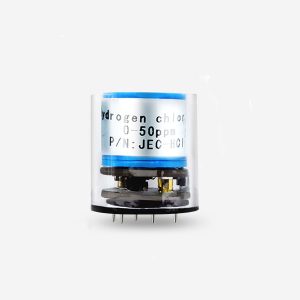Gas sensors have revolutionized the fields of health and safety by providing real-time monitoring capabilities for detecting and measuring various gases in the environment. As technology continues to advance, gas sensors are becoming increasingly sophisticated and versatile, offering a wide range of applications in ensuring the well-being of individuals and communities. This article explores the advancements in gas sensor technology and their applications in promoting health and safety, including industrial safety, indoor air quality monitoring, and wearable sensors for personal health monitoring.

- Industrial Safety: Gas sensors play a critical role in industrial safety by monitoring the presence of toxic or flammable gases in workplaces. Industries such as mining, manufacturing, and chemical production are prone to gas leaks or emissions that can pose significant risks to workers' health and safety. Advanced gas sensors can detect the presence of hazardous gases, such as hydrogen sulfide (H2S), methane (CH4), or carbon monoxide (CO), and trigger alarms or safety protocols to prevent accidents or ensure timely evacuations. These sensors can be integrated into automated systems, providing real-time data to operators and enabling quick response to potential hazards.
- Indoor Air Quality Monitoring: Indoor air quality (IAQ) has a direct impact on human health, productivity, and overall well-being. Gas sensors are instrumental in monitoring and managing IAQ by detecting volatile organic compounds (VOCs), carbon dioxide (CO2), and other air pollutants. In buildings, gas sensors can be installed in ventilation systems to ensure proper airflow and pollutant removal. Smart homes and offices can utilize gas sensors to provide real-time feedback on IAQ parameters, prompting users to take necessary actions, such as opening windows or adjusting HVAC settings, to improve air quality. Continuous monitoring of IAQ using gas sensors helps identify potential sources of pollution and supports preventive measures to create healthier indoor environments.
- Personal Health Monitoring: Advancements in gas sensor technologies have paved the way for wearable sensors that can monitor personal health parameters related to breath analysis. Breath contains several volatile organic compounds that can act as biomarkers for various health conditions, including asthma, diabetes, and even certain types of cancer. Wearable gas sensors can detect and analyze these biomarkers, providing valuable insights into an individual's health status. This technology allows for early detection of diseases, personalized treatment plans, and continuous monitoring of patients' well-being outside clinical settings. Moreover, gas sensors integrated into wearable devices can help individuals monitor their exposure to harmful gases or pollutants in their immediate surroundings, empowering them to make informed decisions and reduce potential health risks.
- Environmental Monitoring: Gas sensors are indispensable tools in environmental monitoring, helping assess air quality and detect pollution sources. By continuously measuring and analyzing gases such as nitrogen dioxide (NO2), ozone (O3), and particulate matter (PM), gas sensors provide valuable data for understanding the impact of human activities on the environment. This information enables policymakers to implement appropriate measures to reduce pollution levels, mitigate climate change, and protect ecosystems. Gas sensors can be deployed in urban areas, industrial sites, and even remote locations to monitor pollution hotspots, identify trends, and evaluate the effectiveness of environmental policies and interventions.
-

Gas detection
Conclusion: Advancements in gas sensor technology have transformed the fields of health and safety, offering unprecedented capabilities for monitoring and managing various gases in the environment. From industrial safety to indoor air quality monitoring and personal health tracking, gas sensors have become indispensable tools for promoting the well-being of individuals and communities. Continued research and innovation in sensor technology will further enhance their sensitivity, selectivity, and reliability. As gas sensors become more accessible and affordable, their applications will expand, enabling proactive measures to address health risks and environmental challenges. Sensing change, gas sensors pave the way for a safer, healthier, and more sustainable future.
 : +86 155 8830 2704
: +86 155 8830 2704 : jxdziot@gmail.com
: jxdziot@gmail.com
